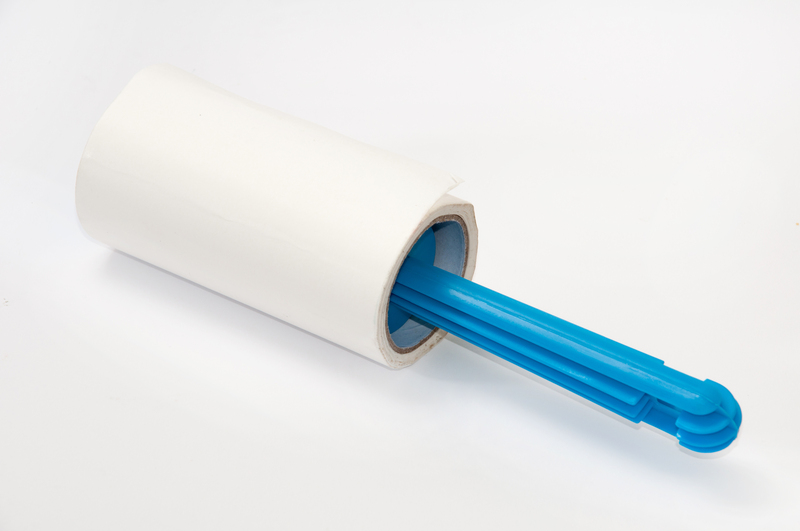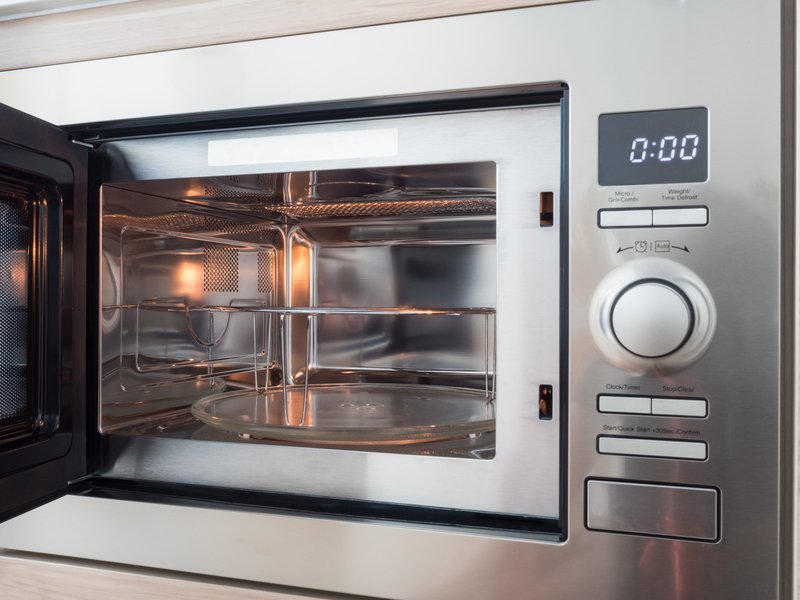The Crucial Connection: Air Quality's Role in Indoor Health
Posted on 21/08/2025
The Crucial Connection: Air Quality's Role in Indoor Health
Indoor air quality has emerged as a vital aspect of overall well-being. As people around the world spend an increasing amount of time within enclosed spaces, understanding the importance of indoor air quality becomes paramount. This comprehensive guide aims to explore how air quality impacts indoor health, identify its primary influences, and offer actionable strategies to enhance the air you breathe every day.
Why Indoor Air Quality Matters More Than Ever
Did you know that the average person spends approximately 90% of their time indoors? Homes, offices, schools, and public buildings are environments where we seek comfort and safety. However, indoor pollution levels are often two to five times higher than outdoor levels according to the United States Environmental Protection Agency (EPA).
Air quality's influence on health is far-reaching, affecting not only those with pre-existing respiratory issues but also the general population. From allergies to chronic diseases, poor quality indoor air can have profound health consequences that are often overlooked.

Understanding Indoor Air Quality (IAQ)
Indoor air quality (IAQ) refers to the condition of the air within and around buildings, especially as it relates to the health and comfort of occupants. Achieving good indoor air quality means controlling pollutants, maintaining adequate ventilation, and managing humidity.
Main Pollutants Affecting Indoor Health
- Particulate Matter (PM): Tiny particles from dust, smoke, pet dander, and cooking processes.
- Volatile Organic Compounds (VOCs): Chemicals emitted by paints, cleaning products, furniture, and building materials.
- Formaldehyde: A harmful chemical found in pressed-wood products and other household items.
- Biological Contaminants: Mold, bacteria, viruses, and dust mites.
- Carbon Monoxide (CO): A colorless, odorless gas from combustion appliances.
- Radon: A naturally occurring radioactive gas that can enter buildings from the ground.
How Indoor Air Quality Impacts Health
Short-term and long-term health effects are both associated with poor air quality inside buildings. Symptoms may manifest as follows:
- Immediate effects such as headaches, dizziness, fatigue, irritation of eyes, nose, and throat.
- Respiratory conditions - asthma attacks, allergies, bronchitis, and worsening of chronic respiratory diseases.
- Long-term effects, including an increased risk of cardiovascular diseases, respiratory infections, and even certain cancers.
Key Factors Influencing Indoor Air Quality
There are several important contributors to healthy indoor air - or conversely, to pollutant build-up. Understanding these factors is the first step toward improving IAQ.
1. Ventilation and Air Exchange
Proper ventilation is the cornerstone of maintaining fresh, breathable air indoors. Without sufficient air exchange, pollutants accumulate and circulate, leading to poor indoor air quality.
2. Building Materials and Furnishings
Modern construction often relies on synthetic materials, many of which emit VOCs and other chemicals. New furniture, carpets, and paint are common sources of off-gassing.
3. Household Activities
- Cooking and heating with gas or wood can release particulates and carbon monoxide.
- Use of cleaning products, air fresheners, and personal care products can increase exposure to VOCs.
- Poorly maintained HVAC systems may harbor dust, mold, and bacteria.
4. Moisture and Humidity
Moist environments promote the growth of mold, mildew, and dust mites. Maintaining balanced humidity (ideally 30-50%) is crucial for minimizing biological contaminants.
5. Outdoor Air Quality and Infiltration
Outdoor pollutants such as pollen, vehicle emissions, smoke, and industrial pollutants can infiltrate indoor spaces through windows, doors, and ventilation systems, compounding indoor air quality concerns.
Common Signs of Poor Indoor Air Quality
Recognizing the evidence of unhealthy air indoors is critical for timely intervention. You might be experiencing poor indoor air quality if you notice:
- Increased allergy or asthma symptoms at home or at the office
- Frequent respiratory infections among household members
- Unpleasant or persistent musty, chemical, or stuffy odors
- Condensation on windows or surfaces, indicating excessive humidity
- Visible mold on walls, ceilings, or vents
Children, the elderly, and those with weakened immune systems are especially vulnerable to the effects of poor air quality.
Health Risks Associated with Poor Indoor Air
1. Respiratory Issues and Allergies
Repeated exposure to indoor pollutants - such as dust mites, mold spores, and chemical fumes - can lead to chronic cough, wheezing, and difficulty breathing. Asthma sufferers are at particularly high risk from indoor pollutants.
2. Neurological Effects
Certain chemicals and gases found indoors, like carbon monoxide and formaldehyde, can impair cognitive function, cause headaches, or even result in more serious neurological problems with long-term exposure.
3. Cardiovascular Disease
There is increasing evidence connecting exposure to fine airborne particles (PM2.5) and indoor combustion by-products with elevated risks of heart disease, hypertension, and other cardiovascular problems.
4. Cancer Risk
Long-term inhalation of certain VOCs (including benzene and formaldehyde), radon, and secondhand smoke augments the risk of various cancers - especially lung cancer.
5. Sick Building Syndrome
This describes situations in which building occupants experience acute health or comfort-related effects linked directly to time spent in the building, often due to unidentified or unresolved air quality issues. Symptoms may improve once the person leaves the problematic environment.
How to Improve Indoor Air Quality
Mitigating indoor air pollution can greatly improve health outcomes. Here's how you can take charge of your environment:
1. Enhance Ventilation
- Open windows and doors when weather permits, to encourage cross-ventilation.
- Install and regularly maintain kitchen and bathroom exhaust fans.
- Use air exchangers and energy recovery ventilators in modern, tightly sealed homes.
2. Control Sources of Pollution
- Choose low or zero-emission products for paints, cleaning agents, sealants, and home furnishings.
- Ban or restrict indoor smoking.
- Limit use of scented candles and air fresheners, which release VOCs.
- Store chemicals and solvents away from living spaces.
3. Manage Humidity
- Use dehumidifiers in damp areas such as basements.
- Repair leaks and address sources of excess moisture promptly.
- Maintain ventilation in bathrooms and kitchens to reduce dampness.
4. Regular Maintenance
- Change HVAC filters quarterly or as recommended.
- Clean air ducts and vents periodically to prevent dust and mold accumulation.
- Service appliances that burn fuel regularly to check for carbon monoxide leaks.
5. Test and Monitor Air Quality
- Use radon test kits if you live in an area at risk.
- Install carbon monoxide and smoke detectors throughout the home.
- Consider investing in indoor air quality monitors to track pollutant levels in real-time.
6. Incorporate Air Purifiers and Plants
- HEPA air purifiers can effectively trap particulates, pollen, and pet dander.
- Some houseplants may help reduce airborne toxins, though their impact is generally limited compared to mechanical filtration.
Special Considerations for Vulnerable Groups
Children, pregnant women, seniors, and those with chronic illnesses suffer a greater impact from subpar air quality indoors. Tailoring approaches for these groups is crucial:
- Use allergen and dust-mite-proof bedding in children's rooms.
- Avoid dry-cleaned items and heavy fragrances during pregnancy.
- Monitor for carbon monoxide with extra vigilance around seniors and those with heart and lung gear disorders.
Air Quality in Schools and Workplaces
Schools
Children's developing lungs are particularly susceptible to indoor pollutants. Good ventilation, regular cleaning, and minimizing the use of harsh chemicals can contribute greatly to a healthier learning environment.
Workplaces
Workers exposed to poor air quality may experience lower productivity, illnesses, and increased absenteeism. Employers are encouraged to provide adequate ventilation, limit sources of VOCs, and regularly maintain HVAC systems.

Emerging Trends and Technologies in Indoor Air Quality Management
- Smart Air Quality Monitors: Devices that provide real-time data and notifications on pollutant levels, helping users pinpoint and address IAQ problems promptly.
- Advanced Air Filtration: High-efficiency particulate air (HEPA) filters, activated carbon filters, and innovations like photocatalytic oxidation for VOC removal.
- Natural Materials: The use of non-toxic, organic, and low-emission building supplies is gaining momentum in both new construction and renovations.
- Automated Ventilation Systems: Integrating HVAC systems with sensors and automation to optimize airflow and filtration based on current air quality data.
Conclusion: Prioritizing Clean Air for Indoor Health
The evidence is clear: indoor air quality is a pivotal factor in our health and quality of life. By understanding its sources, impacts, and actionable improvements, you can turn your home, school, or office into a sanctuary of cleanliness and wellness. Small changes -- from increasing ventilation to selecting eco-friendly materials -- significantly reduce exposure to harmful pollutants.
Take action today to ensure the air you breathe indoors is as healthy and fresh as possible. Whether it's for your family, students, or colleagues, investing in improved indoor air quality is an investment in better health and well-being for all.




